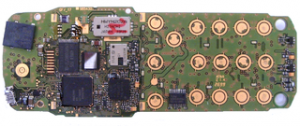The Digital Revolution did for communications what the Industrial Revolution did for manufacturing. Seemingly light-years apart in terms of their introductions – the IR introduced in the mid-18th century, the DR in the late 20th century – a goodly proportion of that which influences our lives in this current century is rooted in these two so-called “revolutions.”
My own introduction to the digital world happened as early as the mid-1970s. Courses I took in college included: Digital Computer Applications; Digital Circuits I and II. This was when I was enrolled in the Electronic Engineering Technology program at California Polytechnic State University, San Luis Obispo. The coursework and course material were interesting, and moderately difficult in terms of my understanding it.
Since those first fledgling digital days, the science/field has really evolved. As for me, I exited the electronics field right around 2008.
I think it amazing just how far technology has come. Doubtless for me the most powerful tool in my digital toolbox is pc-based, word-processing software. The biggest feature or advantage of this capability is that I can create a document “paperlessly.” Depending on the document produced will determine what all is required to generate a finished product. In the case of an Air Quality Matters blog-post production, once all that I wish to include in the presentation is there, it is then a matter of uploading the document to the online site itself. Regarding blog-post, post-production editing, should such be needed, there is a feature for doing just that. And to think this can all be done digitally.
So what this somewhat long introduction has led up to is what kind of impact on air quality the Digital Revolution has had.
Wireless mobile technology, changing landscapes
Where communications (such as with voice- and text-type communications) or correspondence transference (such as with fax- and text-type correspondence transference) are concerned, the benefit(s) is (are) obvious; the drawback(s) maybe not so much. If nothing else, mobility has clearly been impacted in some way, shape or form as a result of communications and correspondence done digitally.

Things like electronic-mail (e-mail for short) and the Internet or World Wide Web, to name but two, have enabled people to interact with each other, communicate, conduct business, do research, get an education (distance learning) and more and in a way or in ways that had not previously been known or existed.
Take telecommuting (working from home) and online shopping, for example. With such travel has no doubt been affected, such as in it being reconfigured – think motor vehicle traffic and how such can either be added to or removed from the road as a result. And regarding shopping online, it is ditto.
All of which has environmental implications as in more driving translating into more emissions being released into the atmosphere and vice versa.
An evolving world
Whether or not on account of the Digital Revolution the world in which we live is the way it is (smaller and more connected), is debatable. What is not is that, in this, the digital age, our world has evolved, good, bad or indifferent.
– Alan Kandel